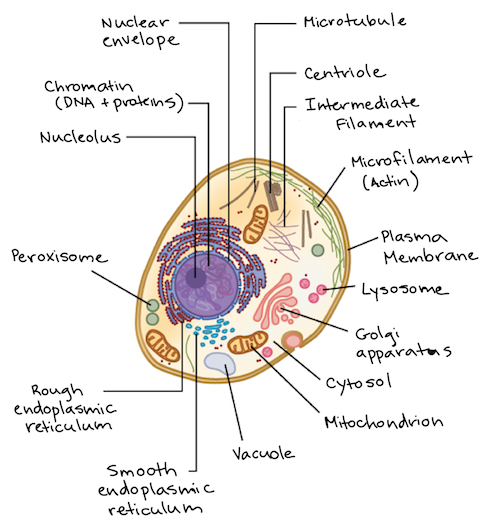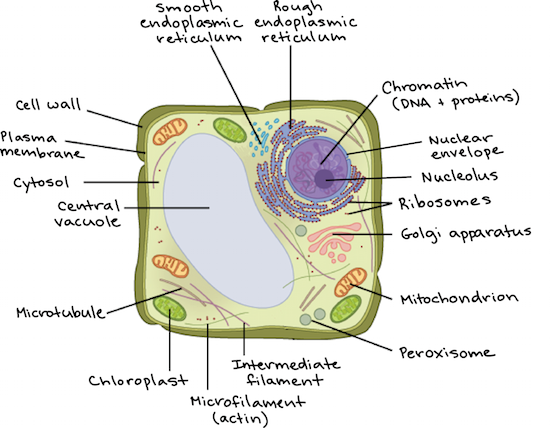ain content
How do plant and animal cells differ?
Both plant and animal cells are eukaryotic, so they contain membrane-bound organelles like the nucleus and mitochondria.
However, plant cells and animal cells do not look exactly the same or have all of the same organelles, since they each have different needs. For example, plant cells contain chloroplasts since they need to perform photosynthesis, but animal cells do not.
Diagram of a typical animal cell:

Diagram of an animal cell with components lettered.
Image modified from OpenStax Biology.
Diagram of a typical plant cell:

Diagram of a plant cell with components labeled.
Image modified from OpenStax Biology.
- Both animal and plant cells have mitochondria, but only plant cells have chloroplasts. Plants don’t get their sugar from eating food, so they need to make sugar from sunlight. This process (photosynthesis) takes place in the chloroplast. Once the sugar is made, it is then broken down by the mitochondria to make energy for the cell. Because animals get sugar from the food they eat, they do not need chloroplasts: just mitochondria.
- Both plant and animal cells have vacuoles. A plant cell contains a large, singular vacuole that is used for storage and maintaining the shape of the cell. In contrast, animal cells have many, smaller vacuoles.
- Plant cells have a cell wall, as well as a cell membrane. In plants, the cell wall surrounds the cell membrane. This gives the plant cell its unique rectangular shape. Animal cells simply have a cell membrane, but no cell wall.
No comments:
Post a Comment